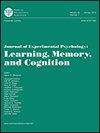鼠标光标轨迹捕捉了预测句子处理的灵活适应性。
IF 2.2
2区 心理学
Q2 PSYCHOLOGY
Journal of Experimental Psychology-Learning Memory and Cognition
Pub Date : 2024-09-12
DOI:10.1037/xlm0001397
引用次数: 0
摘要
最近的心理语言学研究结果提出了一些基本问题,即理解者在句子处理过程中合理调整其预测的能力。两个鼠标光标跟踪实验(每个实验的人数均为 85 人)通过操纵基于动词的语义线索的可靠性来评估这种适应能力。在实验 1 中,当参与者听到同等比例的非预测性句子(如 "发现......自行车")、预测性句子(如 "骑......自行车")和反预测性句子(如 "飞......自行车")时,对目标(如自行车)和干扰项(如风筝)的预测性鼠标光标移动进行了测量。在实验 2 中,参与者听到的非预测性句子和反预测性句子的比例相同。据观察,在实验 1 中,当基于动词的线索不可靠,被否定和被肯定的可能性一样大时,参与者会灵活地调整他们的预测;而在实验 2 中,当基于动词的线索被可靠地否定时,参与者会产生调整后的预测。然而,并没有观察到认知控制方面的个体差异。这些结果被解释为支持合理的理论方法。(PsycInfo Database Record (c) 2024 APA, 版权所有)。本文章由计算机程序翻译,如有差异,请以英文原文为准。
Mouse cursor trajectories capture the flexible adaptivity of predictive sentence processing.
Recent psycholinguistic findings raise fundamental questions about comprehenders' ability to rationally adapt their predictions during sentence processing. Two mouse cursor tracking experiments (each N = 85) assessed this adaptivity by manipulating the reliability of verb-based semantic cues. In Experiment 1, predictive mouse cursor movements to targets (e.g., bike) versus distractors (e.g., kite) were measured while participants heard equal proportions of nonpredictive (e.g., "spot … the bike"), predictive (e.g., "ride … the bike"), and antipredictive (e.g., "fly … the bike") sentences. In Experiment 2, participants heard equal proportions of nonpredictive and antipredictive sentences. Participants were observed to flexibly adapt their predictions, such that they disengaged prediction in Experiment 1 when verb-based cues were unreliable and as likely to be disconfirmed as confirmed, while they generated adapted predictions in Experiment 2 when verb-based cues were reliably disconfirmed. However, links to individual differences in cognitive control were not observed. These results are interpreted as supporting rational theoretical approaches. (PsycInfo Database Record (c) 2024 APA, all rights reserved).
求助全文
通过发布文献求助,成功后即可免费获取论文全文。
去求助
来源期刊
CiteScore
4.30
自引率
3.80%
发文量
163
审稿时长
4-8 weeks
期刊介绍:
The Journal of Experimental Psychology: Learning, Memory, and Cognition publishes studies on perception, control of action, perceptual aspects of language processing, and related cognitive processes.

 求助内容:
求助内容: 应助结果提醒方式:
应助结果提醒方式:


